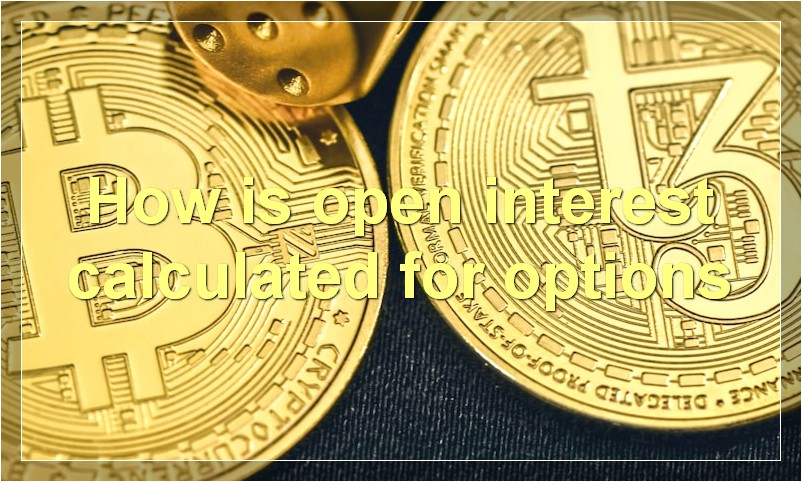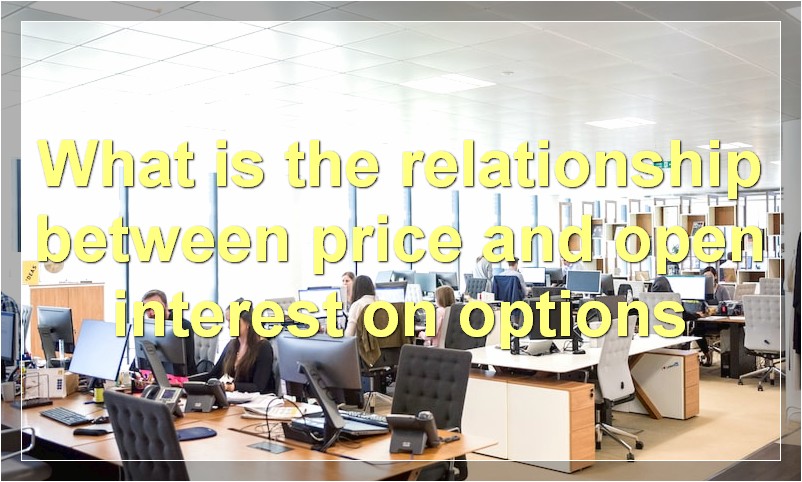When it comes to options, open interest and volume are two key indicators that can provide valuable insights. By understanding the relationship between these two metrics, traders can make more informed decisions when it comes to trading options.
What is the difference between open interest and volume on options
When it comes to options, open interest and volume are two important measures. Here’s a look at what they mean and how they differ.
Open interest is the number of outstanding contracts for a particular options contract. It represents the number of buyers and sellers in the market for that particular contract.
Volume, on the other hand, is the number of contracts traded during a particular time period. So, if 100 contracts are traded in a day, the volume for that day would be 100.
The difference between open interest and volume is that open interest represents the number of contracts that are outstanding, while volume represents the number of contracts that are traded. Open interest can give you an idea of the liquidity in the market for a particular contract, while volume can give you an idea of the activity in the market for a particular contract.
How is open interest calculated for options

Open interest is the number of contracts that are outstanding for a particular options contract. It is calculated by taking the total number of contracts that have been bought and sold for a particular strike price and subtracting the number of contracts that have been closed out.
What factors affect open interest on options
There are a few factors that affect open interest on options. The first is the underlying security. If the underlying security is volatile, then it will typically have higher open interest. This is because there are more people trading the security and trying to take advantage of the price movements. The second factor is the expiration date. Options with longer expiration dates will typically have higher open interest than those with shorter expiration dates. This is because there are more people who are interested in holding the option for a longer period of time. The third factor is the strike price. Options with lower strike prices will typically have higher open interest than those with higher strike prices. This is because more people are interested in buying the option when it is cheaper.
What does it mean when open interest decreases on options
When options trading, open interest is the number of outstanding contracts that are not closed. A decrease in open interest may mean that traders are closing their positions or that new options contracts are not being created. This could be due to a change in market conditions or investor sentiment.
How can open interest help traders gauge market activity for options
Open interest is the number of contracts for a particular options or futures contract that have been traded but not yet closed. The open interest figure represents the total number of open contracts for a particular security and can be used by traders to gauge market activity for that security. Open interest can be used to identify trends in the market, as well as potential support and resistance levels.
What is the relationship between price and open interest on options

When it comes to options, the relationship between price and open interest is an important one to understand. Open interest is simply the number of contracts that are currently outstanding for a particular options contract. The higher the open interest, the more liquid the contract is said to be.
Now, when it comes to price, there are a few different factors that can impact it. The first is the underlying stock price. If the stock price starts to move in one direction or the other, that will have an impact on the option prices as well. Another factor that can impact option prices is the time until expiration. The closer an option gets to expiration, the more its value will start to decay.
So, what does all this mean for the relationship between price and open interest? Well, generally speaking, when open interest is high, it means there is a lot of trading activity going on and that there is a lot of liquidity in the market for that particular option. When there isn’t as much open interest, it can sometimes be more difficult to find buyers or sellers willing to trade at your desired price.
What happens to open interest when an option expires
When an option expires, the open interest is transferred to the underlying asset. The underlying asset is the security that the option is based on. For example, if you have a call option on XYZ stock, then XYZ stock is the underlying asset. When the option expires, your broker will either buy or sell the underlying asset for you at the strike price.
Is there a limit to the amount of open interest on options contracts
There is no limit to the amount of open interest on options contracts. This is because there is no central exchange where options are traded. Instead, options are traded over-the-counter (OTC), which means that they are traded between two parties without going through an exchange. This means that there is no limit to the number of contracts that can be traded.
What happens to open interest when options are exercised
When an option is exercised, the open interest in that option contract decreases by one. This is because the option contract is no longer outstanding – it has been “closed” by the exercise.
Can open interest be used to predict future price movements on options
Open interest is the number of open contracts for a particular security. It is used as a measure of market activity and can be used to predict future price movements on options.

